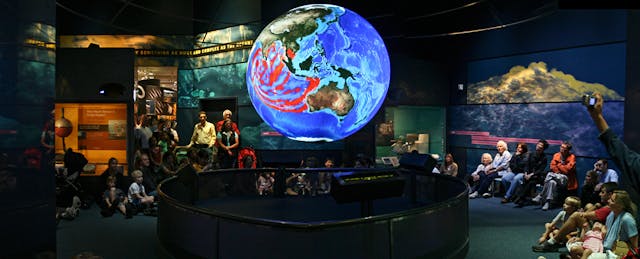This week the National Science Foundation goes Lean on education by providing $1.2 million to educators who want to bring their classroom innovations to a wider audience.
The I-Corps program started when the U.S. National Science Foundation adopted my Lean LaunchPad class. Their goal was to train University scientists and researchers to use Lean Startup methods (business model design, customer development and agile engineering) to commercialize their science. Earlier this month the National Institutes of Health announced I-Corps @ NIH, to help scientists doing medical research take their innovations from the lab-bench to the bedside and accelerate translational medicine.
This week, the NSF is announcing the next step in the I-Corps program-- I-Corps for Learning (I-Corps L). This version of I-Corps is for STEM educators--anyone from kindergarten to graduate school who teaches Science, Technology, Engineering and Math and wants to learn how to bring an innovative teaching strategy, technology, or set of curriculum materials to a wider audience. Following a successful pilot program, the NSF is backing the class with $1.2 million to fund the next 24 teams.
The Problem in the Classroom
A frustration common to both educators and policymakers is how difficult it has been to get new, innovative, education approaches into widespread use in classrooms where they can influence large numbers of students. While the federal government and corporations have dumped a ton of money into STEM education research, a disappointing few of these brave new ideas have made it into practice. These classroom innovations often remain effectively a secret--unknown to most STEM educators or the research community at large.
It turns out that on the whole educators are great innovators but have had a hard time translating their ideas into widespread adoption. What we had was a very slow classroom innovation diffusion rate. Was there any was to speed this up?
A year ago Don Millard of the National Science Foundation (who in a previous life had been a STEM educator) approached me with a hypothesis that possibly could solve this problem. Don observed that educators with innovative ideas who actively got out of their classrooms and tested their innovations with other educators/institutions/students had a much better adoption rate.
Up until now there was no formal way to replicate the skills of the educators who successfully evangelized their new concepts. Don’s insight was that the I-Corps model being rolled out for scientists might work equally well for educators/teachers. He pointed out that there was a close analogy between scientists trying to bring product discoveries to market and educators getting learning innovations into broad practice. Don thought that a formal Lean LaunchPad/I-Corps methodology might be exactly what educators needed to understand how their classroom innovations could be used, how to get other educators and institutions to adopt them, and how to articulate to potential investors their value.
Don then recruited Karl Smith from the University of Minnesota to pilot a class of 9 teams made up of STEM educators. Karl recruited a teaching team (Ann McKenna, Chris Swan, Russ Korte, Shawn Jordan, Micah Lande and Bob MacNeal) and they ran their first I-Corps for Learning class earlier this year.
Karl and his teaching team really nailed it. So much so that the NSF is now rolling out I-Corps for Learning.
I-Corps for Learning Details
NSF will provide up to $1.2 million to support 24 teams. The I-Corps L cohort teams will receive additional support--in the form of mentoring and funding--to accelerate innovation in learning that can be successfully scaled, in a sustainable manner.
To be eligible to pursue funding, applicants must have received a prior award from NSF (in a STEM education field relevant to the proposed innovation) that is currently active or that has been active within five years from the date of the proposal submission. Consideration will be given to projects that address K-12, undergraduate, graduate, and postdoctoral research, as well as learning in informal science education environments. Each team will consist of:
- The principal investigator (who received the prior award);
- An entrepreneurial lead (who is committed to investigate the landscape surrounding the innovation); and
- A mentor (who understands the evidence concerning promise, e.g., from an institutional education-focused center or commercial background that will help inform the efforts)
The outcomes of the pilot projects are expected to be threefold:
- A clear go/no go decision concerning the viability and effectiveness of the learning-oriented resources/products, practices and services,
- An implementation “product” and process for potential partners/adopters, and
- A transition plan to move the effort forward and bring the innovation to scale
Proposals from potential I-Corps L teams will be accepted through September 30, 2014. Class starts January 2015. Check out the I-Corps for Learning website here.
Lessons Learned
- The diffusion of STEM classroom innovations is excruciatingly slow
- The Lean LaunchPad/I-Corps model may accelerate that process
- I-Corps for Learning is accepting applications


